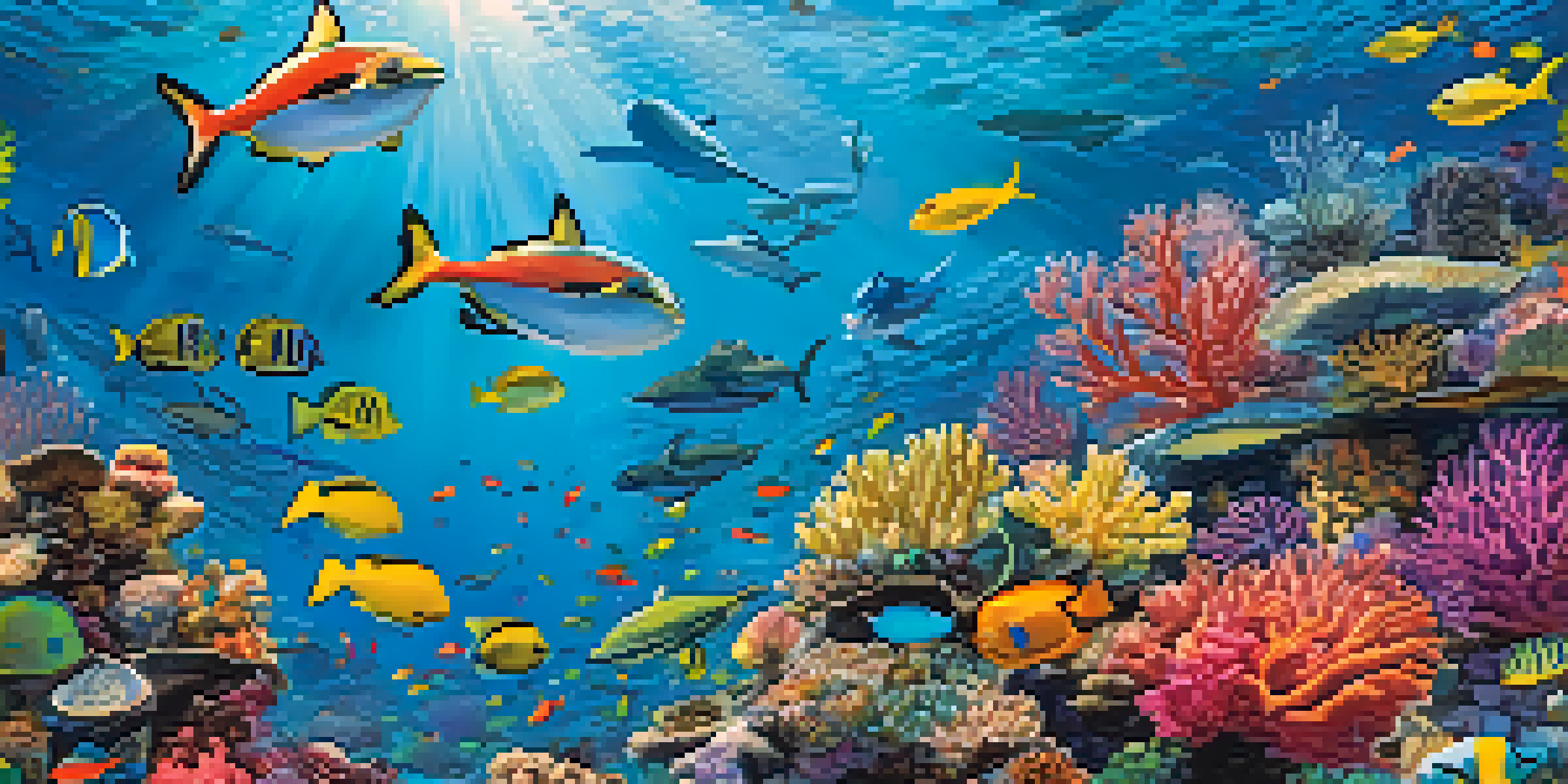The Role of Animation in Highlighting Environmental Issues

Animation as a Tool for Environmental Storytelling
Animation is a powerful medium that can convey complex messages in an engaging way. By using vibrant visuals and dynamic characters, animators can tell stories that resonate with audiences of all ages. For instance, animated films like 'Wall-E' not only entertain but also spark conversations about pollution and waste management.
Animation can be a powerful tool for change, making complex issues accessible and engaging.
Through storytelling, animated content can humanize environmental issues, making them more relatable. When viewers see characters experiencing the consequences of climate change, it prompts them to reflect on their own actions. This emotional connection is vital in driving home the urgency of environmental issues.
Moreover, animation can simplify scientific concepts that may be difficult for the general public to grasp. By breaking down intricate ideas into digestible visuals, animators can educate viewers effectively while keeping them entertained.
Engaging Younger Audiences with Animation
One of the greatest strengths of animation is its ability to engage younger audiences. Children are naturally drawn to colorful and imaginative worlds, making animation an ideal platform for teaching environmental stewardship. Shows like 'The Magic School Bus' introduce kids to ecological concepts in a fun, memorable way.

By incorporating relatable characters and exciting adventures, animated content can instill a sense of responsibility in young viewers. When children see animated heroes fighting for the planet, they are more likely to adopt eco-friendly habits in their own lives. This early exposure can foster a lifelong commitment to environmental care.
Animation Engages Young Audiences
Animated content captivates children, instilling eco-friendly habits through relatable characters and exciting stories.
Additionally, animated films often spark curiosity, prompting children to ask questions about nature and conservation. This inquisitive spirit is crucial for developing future generations of environmentally conscious individuals.
Raising Awareness Through Short Animated Clips
In today's fast-paced digital world, short animated clips have emerged as effective tools for raising awareness. Platforms like social media thrive on bite-sized content, and animations can convey important messages quickly and effectively. For example, animated infographics can highlight statistics about deforestation or pollution in a visually compelling manner.
The greatest threat to our planet is the belief that someone else will save it.
These brief animations can easily capture attention and encourage sharing, creating a ripple effect that spreads awareness far and wide. When a powerful message is encapsulated in an engaging animation, it can reach a larger audience than traditional media alone.
Furthermore, short animations can serve as calls to action, motivating viewers to get involved in environmental initiatives. Whether it's joining a local cleanup or advocating for policy changes, these snippets can ignite passion and drive community engagement.
Highlighting Environmental Challenges through Satire
Animation also has the unique ability to address serious environmental challenges using satire and humor. Shows like 'The Simpsons' and 'South Park' often tackle topics like climate change and pollution in a way that is both entertaining and thought-provoking. This comedic approach can make heavy subjects more accessible and encourage discussions.
By using satire, animators can critique societal behaviors that contribute to environmental degradation. This can lead to a greater awareness of individual and collective responsibilities towards the environment, all while keeping the audience entertained.
Short Clips Raise Environmental Awareness
Bite-sized animated clips effectively communicate urgent environmental messages in today's fast-paced digital landscape.
The blend of humor and critical commentary fosters a deeper understanding of issues and can inspire action, making viewers more likely to engage with the content and share it with others.
The Role of Animation in Environmental Activism
Animators are increasingly using their craft as a form of activism, creating content that advocates for environmental justice. Documentaries like 'Chasing Ice' utilize animation to visualize the impact of climate change on glaciers, making the data more impactful and understandable. This blend of documentary and animation can create a powerful narrative that drives home the urgency of action.
Activists are leveraging animation in campaigns to communicate their messages effectively. Animated videos can illustrate the effects of pollution, deforestation, and other environmental issues, making them more relatable to a broader audience.
This form of activism can also mobilize communities, encouraging viewers to take part in environmental movements. By effectively conveying the stakes involved, animation can empower individuals to become advocates for change.
Creating Empathy through Animated Characters
Animated characters have a unique ability to evoke empathy and understanding in viewers. By personifying environmental challenges through relatable characters, animators can make the consequences of climate change feel more immediate and personal. This emotional connection can be a powerful motivator for change.
For example, animated films that depict animals facing habitat loss can resonate deeply with audiences. When viewers bond with these characters, they are more likely to feel compelled to protect their real-life counterparts and advocate for conservation efforts.
Empathy Through Animated Characters
Personifying environmental challenges in animation fosters emotional connections that motivate viewers to advocate for change.
This empathetic approach can transform abstract environmental issues into concrete, relatable scenarios, encouraging audiences to take action in their own lives.
The Future of Animation in Environmental Education
As technology advances, the future of animation in environmental education looks promising. Innovations in virtual reality and augmented reality are providing new opportunities to create immersive experiences that educate and inspire. Imagine exploring a coral reef or a rainforest through an animated VR experience that highlights the importance of biodiversity.
These immersive experiences can enhance learning by allowing viewers to interact with the environment in ways that traditional media cannot. This hands-on approach can significantly deepen understanding and foster a more profound appreciation for nature.

Moreover, as more creators focus on environmental themes, we can expect a growing body of animated content dedicated to raising awareness and inspiring action. The potential for animation to educate and engage audiences about environmental issues is expansive, paving the way for a more sustainable future.